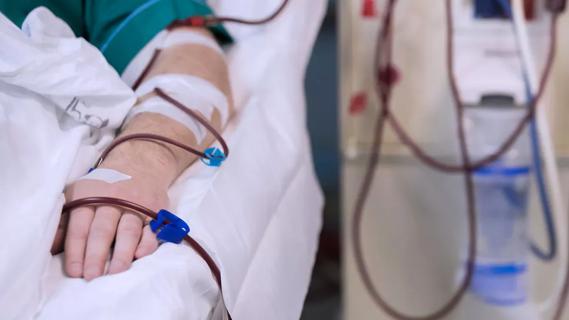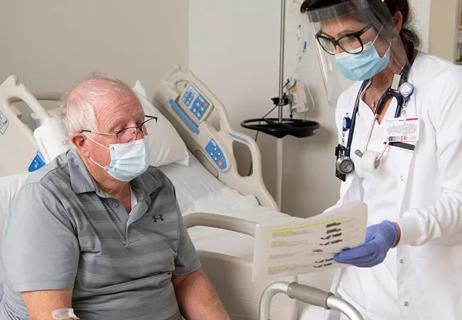Advertisement
A team of nurses focuses on people, not just conditions

Chronic diseases are responsible for seven out of 10 deaths each year, according to the Centers for Disease Control and Prevention (CDC). Cleveland Clinic strives to keep patients with chronic conditions as healthy as possible at its seven Chronic Care Clinics, which are run by nursing professionals.
Advertisement
Cleveland Clinic is a non-profit academic medical center. Advertising on our site helps support our mission. We do not endorse non-Cleveland Clinic products or services. Policy
“Chronic Care Clinics are geared toward patients with exacerbating and remission of chronic diseases, such as COPD and asthma, as well as slow progressive chronic diseases that need monitoring, like chronic kidney disease,” says Kristine Adams, MSN, CNP, ACNO of Care Management and Ambulatory Services at Cleveland Clinic. “We see those patients, follow their disease closely and intervene as needed.”
The Chronic Care Clinics serve patients with a variety of conditions, including asthma, diabetes, chronic obstructive pulmonary disease and cardiovascular diseases, such as congestive heart failure and stroke. The outpatient clinics are designed to keep patients out of the hospital by managing exacerbations in a clinic setting.
“Serving patients in the clinics prevents them from having to go to the emergency department, where it is less convenient and more expensive to be treated,” says Adams. The annualized cost to the U.S. healthcare system of caring for patients with chronic conditions is approximately $1.7 trillion, according to the CDC.
Between July 2016 and July 2017, there were more than 67,000 visits to Cleveland Clinic’s Chronic Care Clinics. Most of the clinics operate with a nurse practitioner and two to three registered nurses, who work as a team and care for patients collectively. When patients arrive, an RN handles the appointment. If the nurse notices any issues or a new development, then the patient sees the nurse practitioner, too.
Advertisement
“The caregivers manage the patients together and know them all collectively,” says Adams. “It’s like a village that surrounds the patient.”
The approach is based on a population health model and truly benefits the patients, adds Adams. Consider the example of a 90-year-old man who lives in the Villa St. Joseph nursing home facility across the street from Marymount Hospital’s Chronic Care Clinic. His greatest joy in life is to play his horn, but his congestive heart failure and COPD often left him too short of breath. “So he came across the parking lot to the clinic once a week and met with the nurse practitioner,” says Adams. “She gently diuresed him enough that he’s now able to play his horn.”
Utilizing a team-based approach to care allows nursing professionals to operate to their highest level of licensure. The services provided to patients vary depending on their needs and disease. For instance, patients with chronic kidney disease are monitored for blood counts and renal function status. Those who require blood thinners have their blood monitored and, if necessary, their anticoagulant dosage adjusted. All patients receive individualized plans of care, medication reviews and education about their disease, signs, symptoms, diet and exercise regimes.
The Chronic Care Clinics also offer preventive services, such as smoking cessation programs, vaccinations and hypertension management. “As nurses, we are trained in the wellness and prevention model – of bringing patients to their optimum level of wellness,” says Adams. “That comes through in our nurse-run clinics.”
Relationship-based care also is paramount at the Chronic Care Clinics. While the caregivers are concerned with numbers – the hemoglobin A1C numbers for diabetic patients and the ejection fraction for a patient with heart failure – they are equally concerned about their patients’ wishes and lifestyles.
“The relationship piece of the puzzle affects the goals of care,” says Adams. “What would success look like for each patient? Is it blowing the horn, staying off dialysis or going to a great-granddaughter’s wedding? Whatever it is, that’s what we aim for.”
Advertisement
Advertisement

Clinicians prepare to deliver lifesaving care in the face of public health threats

Phone triage system reduces call backs and delays in care

New protocol reduces costs, increases patient and caregiver satisfaction

New options benefit caregivers, nursing units and patients

Nurses facilitate preoperative program to educate and prepare patients for ongoing care

Introduces at-home work and new patient screening tool

Health disparities, mental health and more

Ideas for approaches to prevention, response and more